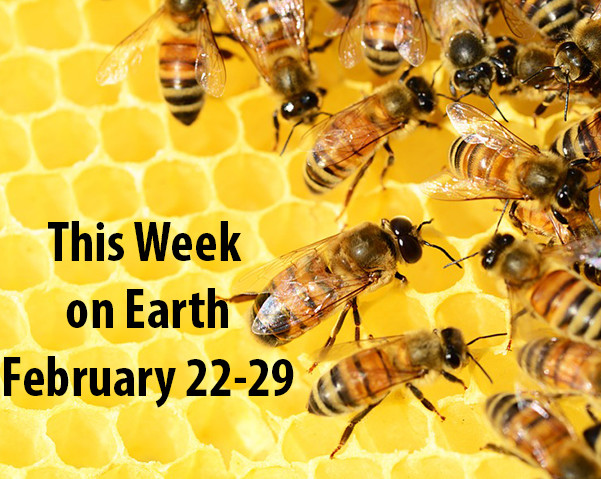This Week on Earth - February 22-29
By Jamie Schmid and Jamie Leventhal
Bye, Bye, Bye: Beetles, Butterflies and Bees

A new study released by the United Nations finds that bees, butterflies and beetles are joining the growing list of animals that face extinction. These insects are in a class of organism called pollinators and allow the world’s food production to be at the level it is today. Almost three-fourths of all crops depend on the sweet pollination from bees, beetles, and butterflies.
Financially, this means almost $235 to $577 billion in global crop production could be devastated by the decline in these insects. What has caused this decline? There are many reasons that include climate change, pesticide use, invasive species, and diseases. The good news? These pollinators don’t have to die. If actions are taken now to reduce the factors contributing to their decline, there is still hope.
Our Nation’s Symbol Found Dead

Last week, 13 bald eagles were found dead in an area in rural Maryland. This is the largest die-off in an isolated area of Maryland is over 30 years. The eagles were first discovered after a local man was searching for deer antlers in a field.
The carcasses of the birds are being sent to a lab in Oregon to determine the cause of death, and authorities expect to have an answer in a few weeks. Although bald eagles are no longer endangered species under the Endangered Species Act, they are still protected under the Bald and Golden Eagle Protection Act. This act charges people $100,000 if they kill one of these birds, and sentences to a year in jail
As the state waits to determine what happened to the birds, many local and federal animal protection agencies are offering financial rewards for any information concerning the deaths.
Monarch Migration

This year's successful migration of Monarch butterflies brings hope that the species may yet survive.
After years of severe weather and shrinking habitats, many believed that these butterflies would die out. These orange-and-black butterflies much fly over 2,500 miles from Canada to Mexico. Along the way, they rely on milkweed for food and protection for their eggs, but erratic weather patterns and deforestation in Mexico made their journey more difficult. Monarch butterflies are especially vulnerable to a warming climate, so numbers have greatly decreased over the past decade.
The World Wildlife Fund estimated that the butterflies covered about 10 acres of Mexican mountain forests this winter, about three times larger than the space they covered last year.
Decorated Death Valley

Record rainfall in Death Valley has spawned more than 20 kinds of desert wildflowers into a "superbloom."
These rains, most likely from this year's El Niño cycle, prompted huge amounts of wildflowers to bloom. Death Valley National Park in California is one of the hottest places on earth, but a spectrum of colors now decorate the valley through carpets of flowers. The park normally receives about two inches of rainfall per year and some wildflowers are able to grow, but the flowers this year increased in both amount and variety.
If the weather doesn't get too hot or windy, the flowers will remain until mid-March.
[twitter style="horizontal" float="left"] [fbshare type="button"]

